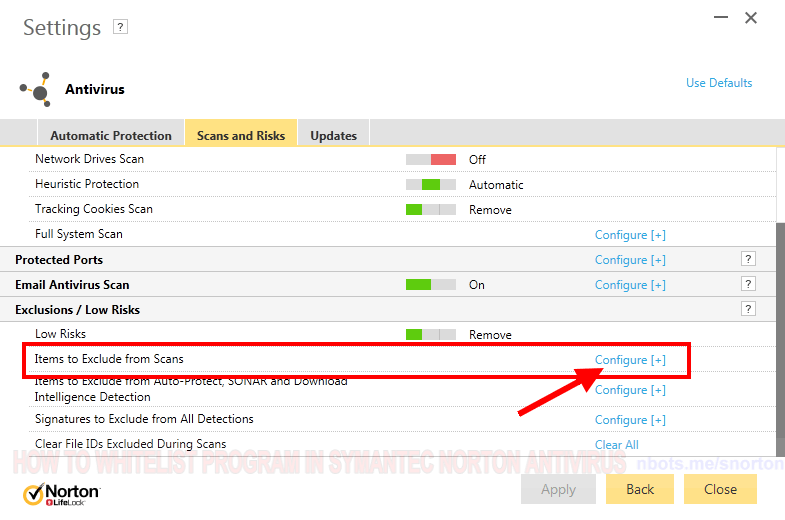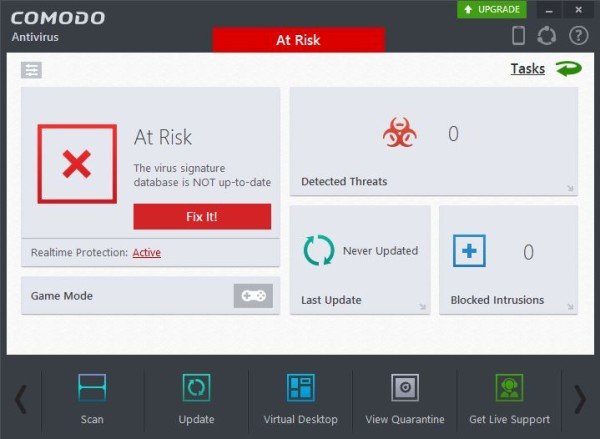

- COMODO ANTIVIRUS FALSE POSITIVE WHITELISTING SOFTWARE
- COMODO ANTIVIRUS FALSE POSITIVE WHITELISTING CODE
SecureBox uses application containerization technology. SecureBox has another feature that helps with whitelisting.
COMODO ANTIVIRUS FALSE POSITIVE WHITELISTING SOFTWARE
Whitelisting software allows applications on the whitelist to run in a secure way. Remember the logic behind whitelisting which is to deny all and permit some only. The whitelisting feature adds more layers of security which is a good practice. SecureBox watches over your network for any suspicious activity 24/7. SecureBox is also known for being an award-winning intrusion detection and prevention software. This feature alone counters most threats already. This prevents threats like malware from entering your system or network. Whitelisting software blocks unknown and suspicious programs. Here are some of the advantages of using whitelisting software: Using whitelisting software would counter the majority of these threats. Those are some of the threats a network faces every day. These threats come in different forms like the ones below: There are a lot of threats that a network faces. What Are The Advantages of Using Whitelisting Software? You will know the advantages of using whitelisting software in the next section.

There are a lot of other features that SecureBox offers. SecureBox gives you the ability to whitelist applications and IP addresses as well. Whitelisting software is a security solution that every network should have.Ī typical whitelisting software enables you to whitelist websites and email addresses only. This allows them to permit only those things that are on the whitelist. We’ll discuss whitelisting software in details in the next section.Ī whitelisting software allows admins to have control over the network. You are now aware of what is whitelisting. The logic behind this one is to allow all and deny some. This is a list of things that aren’t allowed on a network. The opposite of whitelisting is blacklisting. A network that doesn’t use whitelisting software is vulnerable to many threats. Imagine if there are no application, website, IP, and email whitelisting. Only those that are on the whitelist have permission and access on the network. So by default, all unknown entities aren’t allowed access to the network’s resources. The logic behind a whitelist is to deny all and permit some. Software that has whitelisting features is advisable. VirusTotal is mainly looking for large software vendors to grow its collection of trusted software and the initiative is of course not open to potentially unwanted applications and adware developers.What is a whitelist? This is a list that contains the things that have permission to run, to open, and to execute on a network. A recent Ponemon study showed that US companies spend $1.3 million each year addressing cybersecurity alerts that turn out to be false alarms, wasting nearly 21,000 man hours. Software developers take a brand hit when programs are rendered unusable for a large portion of their users, for one, and antivirus vendors' reputations may be severely impacted.īut also, overhead skyrockets: support teams for the affected programs may be suddenly overwhelmed by user emails claiming that the given software is not working correctly. “Nowadays antivirus vendors are increasingly required to become more proactive, this includes developing generic signatures and heuristic flags, which very often leads to mistaken detections in an effort to have a more secure user-base,” said VirusTotal’s Emiliano Martinez, in a blog post.īut those mistaken detections have a raft of undesired effects. It said that in the one week since it was kicked off, more than 6,000 false positives have been fixed.įalse positives are a growing issue. So far, VirusTotal has put the program into action with Microsoft. So, whenever an antivirus solution mistakenly detects one of the files as malicious, VirusTotal will notify the pertinent vendor, allowing them to correct the false positive.Īdditionally, when the files get distributed to antivirus vendors, they will be tagged so that potential erroneous flags can be ignored, preventing a snowball effect with detection ratios. Once developers have shared the files in their software catalogs to the whitelist, those files can then be marked accordingly as safe.
COMODO ANTIVIRUS FALSE POSITIVE WHITELISTING CODE
The Google-owned malware-scanning service is inviting software developers to submit code for a whitelist, dubbed Trusted Source, which will be cross-referenced with future malware and virus detections. VirusTotal is taking a shot at false-positive malware detections.


 0 kommentar(er)
0 kommentar(er)
